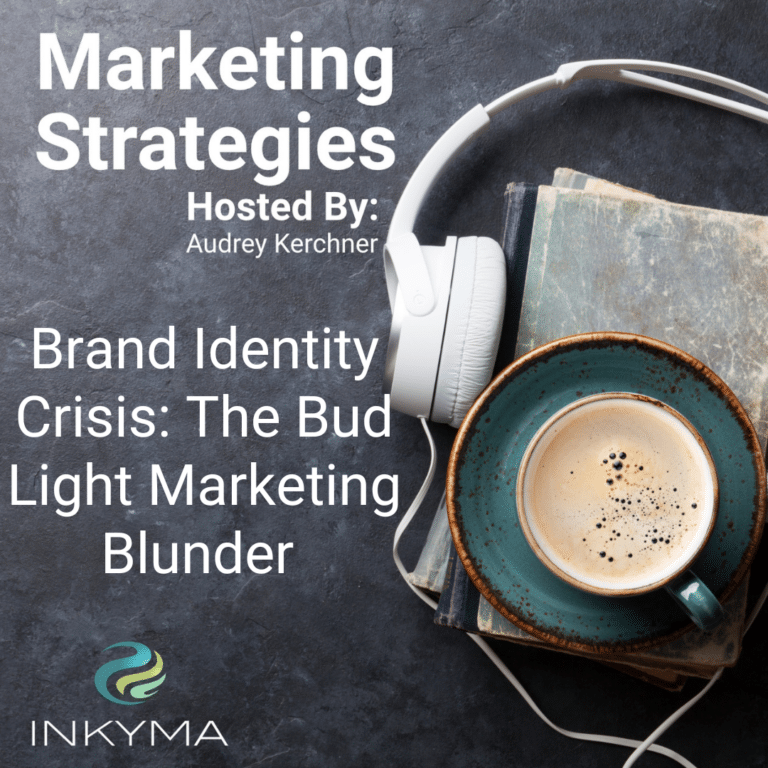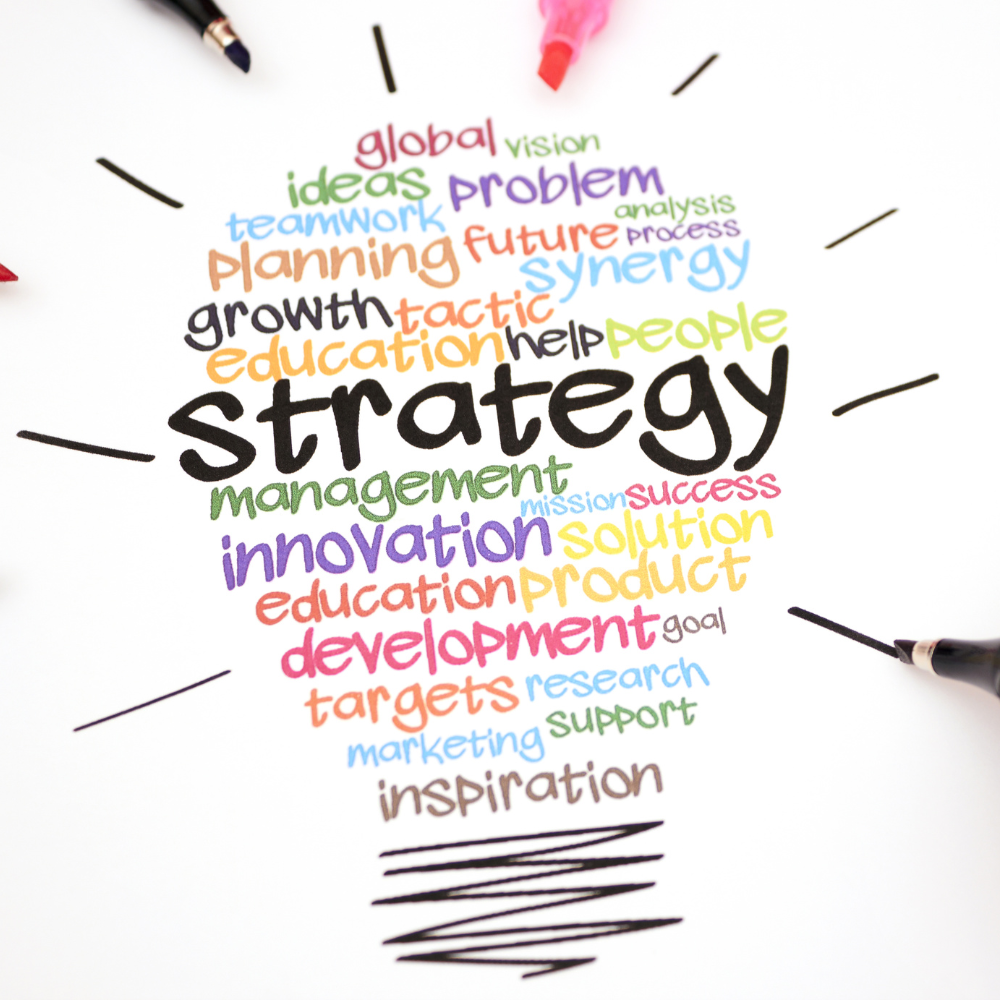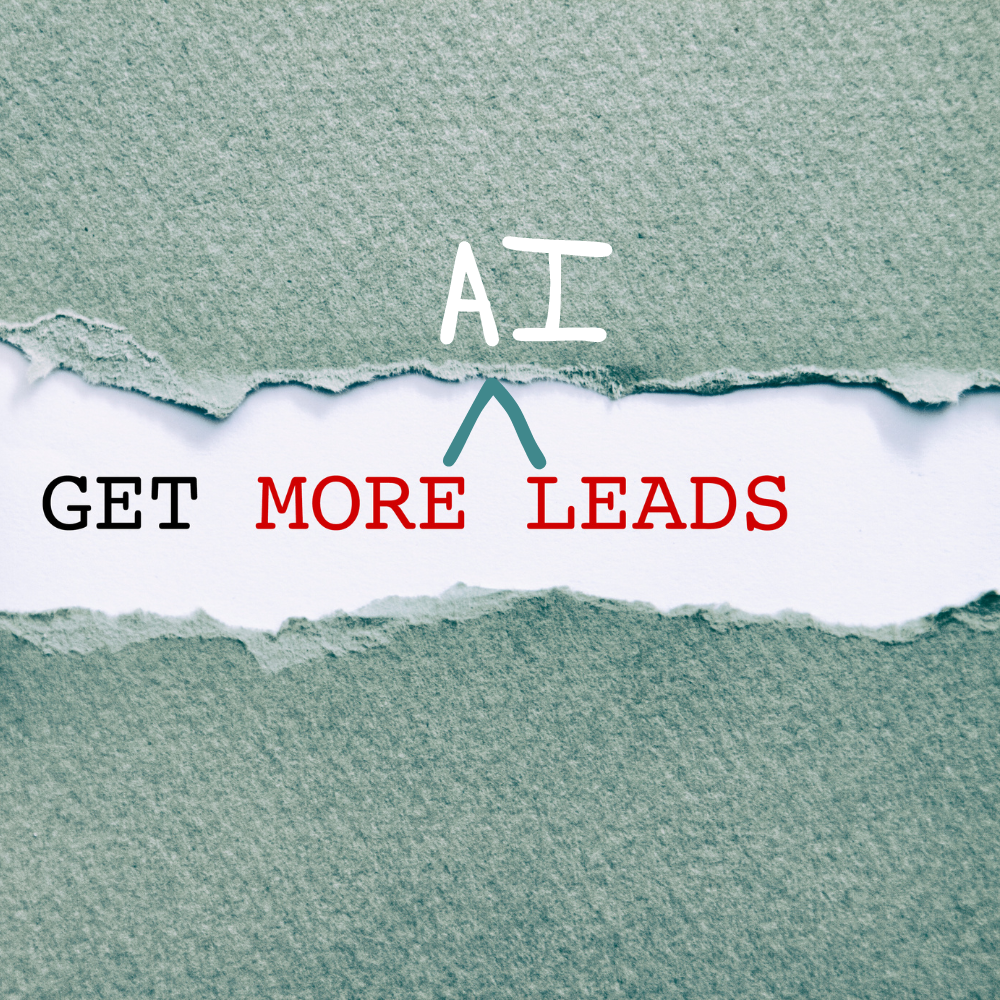In this podcast episode, we delve into the captivating story of Bud Light’s recent brand identity crisis. We begin by reflecting on the brand’s legacy over the past two decades, highlighting its core values, target audience, and memorable advertising campaigns. Next, we examine the controversial ad that sparked widespread backlash, discussing its content and departure from the brand’s established identity. We then explore the fallout from this marketing blunder, analyzing the factors that contributed to its negative impact. Finally, we offer an alternative approach, providing a creative example of how Bud Light could have remained true to its roots while still innovating. Join us as we uncover the lessons to be learned from this cautionary tale of branding gone awry.
Links Mentioned In This Episode
Episode 37- Strong Brand Identity Part 1: The Customer
Episode 38- Strong Brand Identity Part 2: How To Talk To Your Customers For Better Engagement
Episode 39 – Strong Brand Identity Part 3: Branding Visual Identity
Link to article for reference and review of the commercial –
Love our Podcast? Buy us a cup of coffee to help keep creating for you –
Sign up for our newsletter at marketingmasterminds.co Free marketing educational content with how-to videos delivered to your inbox.
What we discussed:
- New Bud Light campaign
- Who is Dylan Mulvany and why was she chosen
- Why and how this recent ad has affected their brand and customer loyalty and how they could have approached it differently
Brand Identity Crisis: The Bud Light Marketing Blunder That Enraged Its Core Audience Transcript
In the previous episode, I explored the significance of cultivating a strong brand identity in a three-part series. In this episode, we’ll examine what can happen when a brand with a well-established identity takes a sharp turn against its core target values. We’ll delve into the recent Bud Light Marketing misstep that led to a catastrophic backlash from their primary target audience, resulting in severe financial consequences for the company.
Join us as we dissect this cautionary tale of branding gone awry.
So before we dig in, I have a little bit of housekeeping for you. Definitely go to the website, inma.com and click on the episode because there’s show notes. there’s gonna be links to previous episodes that I mentioned as well as, articles and, if I mention any products, I probably won’t with this one.
but they’re all gonna be in there along with a rough trans. Just so you know that when we do make product recommendations, more likely than not we mix them together, is we’re partners with many of these products that we recommend because we use them and create marketing for our clients with them.
So by clicking on those, we do get a small commission back and it helps us keep making all this great free content. So we thank you so much. If you decide to click on one of our links to buy. Okay, so the reason I’m sticking to this one topic is I usually do a monthly marketing update in one of the spots, but I decided I wanted to focus on one that was really big news right now, and that is the new Bud Light campaign.
So you may have heard that Bud Light is working with a new spokesperson who is a transgender social media in. So I’m gonna stop right here and let you know. This is not a political discussion, but it’s really a marketing discussion, so I’m not going to address any type of political issues about who they’re using, bases, all that other kind of stuff.
I’m really looking at why this,spokesperson was chosen for this brand from a branding perspective and really why and how the type of change they made, in their marketing strategy affected their brand. I think that is the interesting story here, and it’s more on topic for our podcast. So with that, let’s talk about Bud Light.
They have been a brand that’s been around for a very long time. And so I wanna go back in history a little bit to set the stage for you. their traditional target audience is pretty broad, pretty well defined men and women ages 21 to now, I’d say about 55, right? You’ve got those multi-generations that have been drinking, this beer for quite some times, probably when they were in their twenties and now they’re still drinking it.
The brand Had positioned themselves as a beer that brings people together. And so what that means to me, it could be for a family cookout, it could be a bachelor party, it could be a sporting event, like if they went to an NFL game or if they were hosting a Super Bowl party at their house, which is.
Completely supported by all the millions in dollars that, bud Light has spent in Super Bowl advertising over the years. to me it also means outdoorsy people, hikers, campers, hunters, that I think they Self-identify as down to earth traditional, approachable, easygoing kind of people.
and the marketing that was done by Bud Light had a lot of humor, right? And at the time that these, campaigns were put together, they were definitely mainstream, right? Current cultural, Totally on point for that, right? For that generalized audience. So let me share some of those examples from over the years so you get a sense of what I’m talking about.
So in 1987 there was Spuds Mackenzie, the dog, which was pretty cool. yeah, I’m just reminiscing here a little bit too. 1989 we had the Bud Bowl, where you had Bottles playing football. Of course, 1995 we had the Budweiser frogs very popular. 1998, they jumped to real men of genius. And what this was was like everyday men doing ordinary things where.
songs were put together, parody, poking at them a little bit, but, calling it extraordinary things. and they really were kind of that embodiment of the blue collar worker. So that’s a little important here too, when we’re talking about a target audience or a target demographic.
And then in 2018 we have Bud Knight, K N I G H T. And they were playing on the popularity, the pop culture of game of Thrones at the time, which was a hugely popular show on H B O. and those campaigns went well. So hopefully you’ve got some of those images in mind. A lot of us have seen those and enjoyed those over the year, whether we drank the beer or not.
So now let’s talk about this new spokesperson that they brought on in April of 2023. And this is Dylan Mulvaney, a transgender man who’s identifying as a woman. And part of that is also cuz they put it in their narrative that they put out there is they’re celebrating Dylan. They’re, one year of womanhood, right?
So it’s only been, this transgender thing is for a. And I put a link in the show notes to an article that gives you a lot of detail about all of that. but with a clip of the initial ad that Dylan made, dressed very similar in an Audrey Hepburn style, the black dress, the necklaces, the updo hair.
if you’ve ever watched breakfast at Tim’s, that’s the look he is, going for. And then in. the video, Talking about March Madness, not understanding what it is with some Bud Light cans there. a ditzy type of a routine, definitely not Audrey Hepburn there.
if you watch it, you’ll get the feeling for it better. Hopefully I’ve given it a good explanation. So here’s the issue, right? The target demographic does not relate to this on many different fronts, right? if you go back to the target demographic I laid out, those people don’t see themselves in the person that’s in this video.
And when you have spokespeople or you have people representing your brand, they should be representing your demographic so that the person watching it relates to it. So that was missed, right? Also, that target demographic person doesn’t see their friends in it either. Like that’s One of my friends,we do, even if we don’t follow basketball, we do know what March Madness is.
It is a sport similar to the NFL is in a major sport, and maybe they do follow both, right? there’s some folks out there that they follow all the sports through the season. So it make, what this is, is it makes it hard for that target audience to justify their brand loyalty to the Budd Light brand. and I think given all the fallout that I’m seeing in the media, they also feel betrayed by the brand and by the company.
Could they be questioning right as they’re watching this, as they’re talking to their friends, are we not good enough any longer for this brand? Do they not want us? And if so, the knee jerk reaction for people is, well, if they don’t want me, I don’t want them. So brand loyalty, which is really, I think what we’re talking about here, right?
That is the nut. It’s about how a person relates to the brand as part of their personal identity, right? When we have brand loyalty, and I don’t care if it’s Bud Light, if it’s Apple, if it’s Microsoft, if it’s Google, right? Any brand that we say, yeah, that is our brand, we pull them into our own personal identity, right?
Clothing as well, like all of these things. And so when we pull it in and make it ours, that’s great for the brand because then there’s loyalty there. But then what can happen is it can back. If the brand changes direction and no longer is loyal to that type of customer, and that’s what I think has happened here.
So let’s talk about the fallout of this a little bit. So since I’ve recorded this, the Anheuser-Busch stock, which is the parent company, the overarching company of Bud. their stock has fallen by about 4%, right? Depending on what you look at. And when you look at it, three and a half, four ish, some I’ve even seen say 6%.
So you’re like, okay, that doesn’t sound so bad, but let’s talk about that in money. This is a huge company, a huge brand. They have a lot of value, so that 4% is worth about 5 billion in value. And so if I was a stockholder and my stock that I’m invested in, maybe I sit on the board, maybe I’m, got a lot there.
If they lost 5 billion, I’d be a little upset. We would need to have a convers. The other thing that’s happening is so that stock is being sold, going down, value is going down because of all this people, regular people, everyday people are boycotting the brand. They’re not buying it in the stores.
They’re not buying it when they go to the bar. and they’re just, and if they have it, They’re doing other things with it and they’re making videos about it. the most popular one, or the most, recognizable one that I saw was a celebrity kid. Rock posted a video of using full Bud Light, cases of beer for target practice with his, I don’t know what kind of gun it was.
It was a gun. We’ll leave it at that, the message is that he really wanted Bud Light to know what he thought. Their new campaign, cuz again, I bet he identified as a person that this is my brand and now he’s feeling a little betrayed. Maybe more than a little. And then I’ve also seen reports and information where bars in certain parts of the country are turning away the Anheuser-Busch trucks with the Bud Light in it and canceling their standing order.
The truck rolls up, he goes, no, we don’t want it. And then the drivers are telling him, yeah, you’re not the only one. so this is happening in multiple places. And I, from a bar owner’s perspective, I can totally understand thatthat bar has its own identity as well. And its own clientele and bars probably know that better than anybody else cuz they see them face to face.
They have constant relationships, faces, names, and so the bar owner doesn’t. It, eat that inventory. He’s certainly not going to push to sell it right now. And and or he may also feel betrayed as well, because that a brand that he brings into his establishment and represents, has betrayed his clientele, right?
So there’s that trickle down effect, and this is all coming together here. So that bar knows who exactly their target audience is for sure, and they don’t want to get, looped in with, bud Light getting alienated, getting boycotted, scenario. So let’s talk about how this happened.
How could a multi-billion dollar company like Anheuser-Busch allow something like this to happen? they’ve got huge marketing departments. They pay people a lot of money to get this right. So here’s what I’m seeing, right? Bud Light’s, VP of Marketing, and according to her profile, her name is Elisa Hiin.
I’m pretty sure I butchered that. I apologize so much, it was not on purpose. I’m just really bad at pronouncing names. So in her online profile, she says that she’s the first female VP of marketing for this particular brand and that she was, brought in that she wanted to take the brand and update it from fratty and out of touch humor for today.
Okay, fine. she also went on to say that she was hired to take this declining brand. Anheuser Bush is saying, we think Bud Light is declining and try to bring it back to life. And so she was tasked to evolve and elevate the iconic brand. I’m doing air quotes here a lot people, the way she interpreted that according to a, Interview she gave is that what she thought it needed was the brand needed to incorporate inclusivity and shift the tone.
Again, nothing wrong with So here’s where I think things went off the rail with what was approved and done and went out the door. In my opinion, this new campaign doesn’t do either of those things. It doesn’t incorporate inclusivity, and it certainly doesn’t shift the tone. What it does is it takes the tone, smashes it, and completely reinvents it all at one time.
At a moment in time, it’s like a car crashing into a wall. you really don’t promote inclusivity by alienating your existing customers. And maybe she didn’t think that’s what was gonna happen, right? Hindsight’s always 2020, this was abrupt and it was jarring. This type of a switch and change on what the campaign looked like.
And, the target, the existing customer base didn’t feel it.
you can get away from Friday, you can go gradually over time to a new, type of campaign, shifting slowly, not doing this very like big 180 turn. so let me explain from my perspective how this could look like if I was asked right. So the way I think of target audiences is imagine that you have, a bullseye target, like if you were going to do archery, right?
You’ve got the, big red circle in the middle, and then you have these concentric circles going outward to make the target larger on where you’re hitting things. And so in this instance, the Bud Light. Brands, target audience is extremely well Established. They’re that big circle in the center, that bullseye, right?
they’ve got that honed in, whether they like it or not. And so with a brand like this, you don’t all of a sudden go and try to hit a demographic that is four or five or six concentric circles outside that target on day. That’s what they’re doing is like they shot an arrow into the center and then there’s a arrow shot upright, close to the edge.
That’s what this feels like to me. The goal. Should be is if you’re going to change your target audience over time, is to try to, keep as much of your existing demographic as possible while slowly starting from the first ring to the second ring to the third ring, by expanding that out to other target markets that would be interested in your product.
Then you’re gonna see some erosion, right? You’re gonna see some erosion from that center. It’s natural, it’s normal. Some people are gonna fall off, which is already happening. But then over time, that gets replaced and then improved upon. The more rings you go out on a gradual basis, right? So this is something that should take, months and years, not one single campaign.
in my opinion, a way to do this is they could have gotten away from fratty and gone heartfelt. Talk more about families togetherness. Maybe start inserting the seed of the idea of there are different types of families out there. It’s not just all blood relatives. It’s, who do you feel like your family is?
share a bud light with them, right? And it could be your best friend. It could be. one of your coworkers, someone that you’ve bonded with, and you feel like they’re family and they could be totally different than you. One of the things that I thought would be really cool as I was putting this together is that on TikTok, there’s a series of videos that were made by a bunch of different creators and they all, stitched them and pulled them together about a cookout.
And this particular cookout was there were different. Age groups and races and nationalities, and they were all sending this message of, yeah, let’s have a cookout together. And then everybody, play on their strengths as their age or nationality, and that’s what they’re gonna bring, which I thought was really cool.
you’d have to go and find them. they’re definitely there. And so you could take a concept like that. Influencers that were already doing that and then having them start to introduce something like Bud Light. And it’s oh yeah, and by the way, I’m gonna bring the Bud Light along with this and my grandmother’s gonna do that.
that’s just an example of how you’re still sticking with that core base and then slowly introducing yourself out to these other brands, and being inclusive and changing your tone. This is still week one of the fallout of all of this. Who knows what’s gonna happen over the next couple of weeks, but I do encourage you to follow it.
because it would be interesting to see how Anheuser-Busch tries to recover from this and the direction that this brand is gonna take in the future. does it really sink it for good? Can they write that ship who? So I always like to end the podcast with a take action, and so I do have one for you here, right?
And it’s really a question, do you know your target audience? Are they loyal to your company or loyal to your brand? So first, if you said no, like I don’t know who my target audience is. I would strongly recommend that you figure that out and do it as quickly as possible. Go listen to the three part episodes.
I put the links in the show note for those about building a brand and what that means outside of just your logo, because that’s really where the money is when you build brand loyalty. those customers will refer you. They will continually buy from you again. they will speak wonderful things about you.
There’s all kinds of great things that happens when you have a really successful, strong brand, and it really all starts with who that customer base is and how well you treat them. Based off of this example, if you do have a loyal customer base, like you’ve done that work, What I’m suggesting to you here is you protect it really at all costs, right?
Make sure you honor that base, that customer segment. Even if you’re thinking about expanding, like maybe you’re looking at your archery target and you’re like, I wanna expand it out a little more. That’s okay. Definitely do it, but do it smartly, right? Don’t sacrifice what you already have today for where you want to go tomorrow.
And that’s really what customer segmentation is all. So here are my final thoughts for you on this one. I like looking and dissecting these larger brands when events like this happen or something. That’s over time, right? What works, what doesn’t work? What was brilliant, what wasn’t, because it’s very applicable to us in the small business marketing world, right?
We can take these examples, we can scale them down and figure out how it’s gonna work for. You learn the lessons and you apply them. And what’s really great is that because this is at such a large scale, there’s so much information out there to understand, to digest points of view. Like this particular one, you could sit and watch videos on it all day.
There’s my opinions, my perspective of this, but there are other people out there that have really good and different perspectives. as well as listening to, the VP of Marketing for Bud Light Explain. Why she chose the direction she did. You don’t get that type of insight from other companies.
so definitely use this to your advantage. And so if you are thinking about a new customer segment, whether it’s a new product, existing product, but repurposed for another group, or you’re going to a different location either in your state or different state, let’s have a chat, right? There’s different ways that you approach that, where you can secure your existing brand identity and then expand on it, and then have a successful launch in these other categories, without phrasing.
what you’ve already built today, and I’d love to have a conversation with you about that. So here at inma, we love to give back to the business community. You can go to the website, inma.com, ik yma.com, and schedule a 45 minute marketing consultation. if you don’t wanna have a chat, maybe you just got a quick question, go to the contact form, fill that out.
We answer all of those. We do have the Marketing Mastermind YouTube channel. That’s where we help really small business owners, the side hustle folks, the work from home people. Help them DIY their marketing, but there’s something there for everybody to learn, like sharing tools, how the tools work, how we like to use the tools.
And then you can sign up for the Marketing Mastermind newsletter as well. That’s in the show note so that if you wanna get that content pushed to you every time we put it out, you are all set. Hopefully you found this episode as interesting as I found it to kind of research and get it out to you guys.
if so, and if you’ve been having these discussions with other people in your business, share it, share the podcast, right? Sharing knowledge is always a good thing. And if we’re all sharing and supporting each other in this small business community, we’re all going to grow and thrive. So thank you so much for listening and I hope you have an amazing day.



























